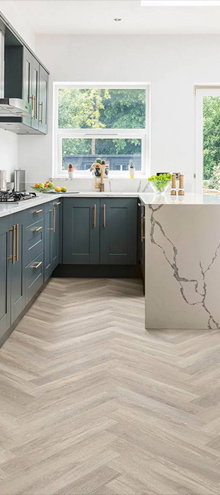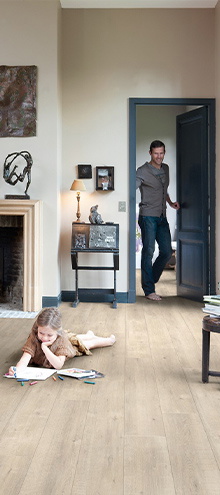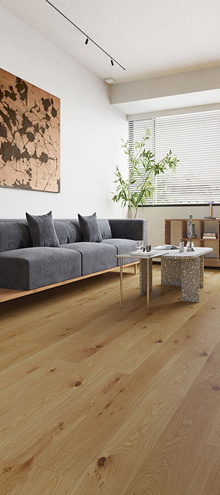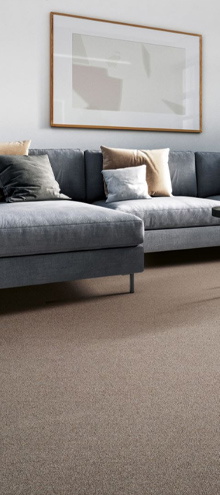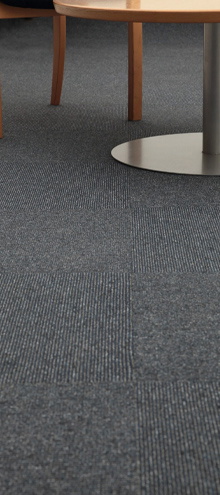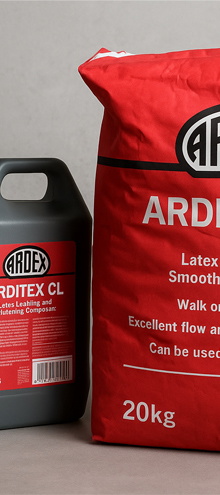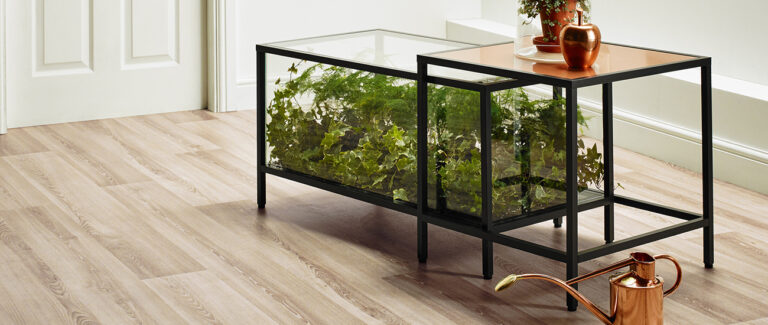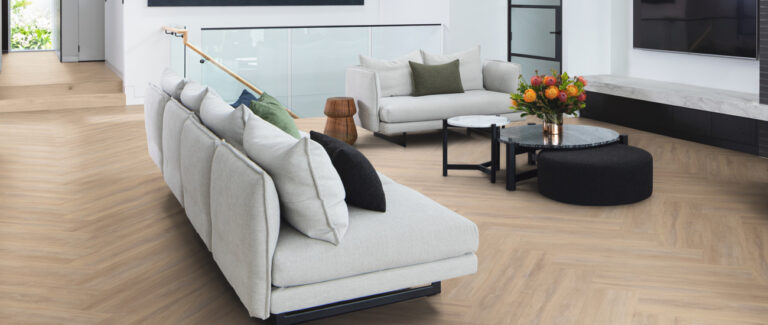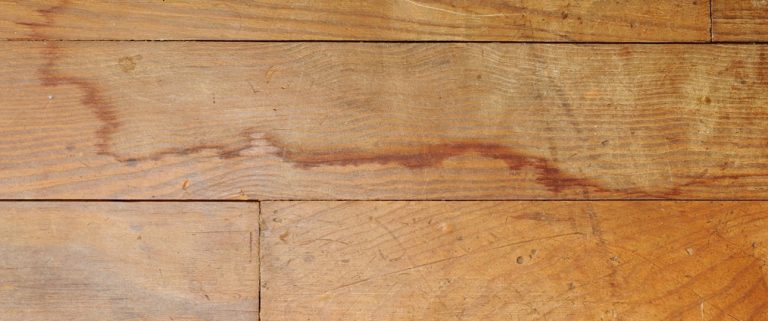Nobody wants to come home to a home that’s too cold, so making sure your home is well-heated is always a priority. There are plenty of ways to warm up your house, but underfloor heating has become a particular favourite method in recent years.
Engineered wood flooring is an especially strong fit for underfloor heated floors, as it can resist many of the potential issues caused by this method of heating better than other wood options.
Underfloor heating with wooden floors is definitely a nice option – but you should be aware of the pros and cons that come alongside it. Our guide will explain the advantages, as well as highlighting the potential issues, as well as our best tips on how to prevent and fix them.
In this guide:
How does underfloor heating work?
There are two common ways of adapting your wooden flooring for underfloor heating. The first is by installing pipes that pump hot water around the space beneath your wooden floors, letting the warmth radiate through the ground and heating the floor you walk on.
The second option is electric underfloor heating, where metal coils are placed beneath your wooden floors. A current is run through this network, warming the metal, and transferring the heat through your flooring.
Both of these options work for a variety of flooring materials, but in terms of wooden options, engineered wood flooring is best for underfloor heating. Since it doesn’t grow or shrink in moisture as much as other options, it can withstand wet heating much more easily than other choices. Plus, engineered wood costs less than other wooden floors, and is easy to clean.
What are the advantages of underfloor heating?
There are plenty of reasons to invest in underfloor heating for your home. Here are some of the most important upsides of this heating method.
Energy saving
Underfloor heating can be expensive to install at first, but once it’s been added to your home, you may notice your monthly bills going down. This is because, compared to a traditional radiator, underfloor heating requires lower temperatures to make your warm.
With household energy bills averaging £699 per year in the UK, underfloor heating is a great choice for anyone looking to conserve some energy and spend less on their home’s upkeep.
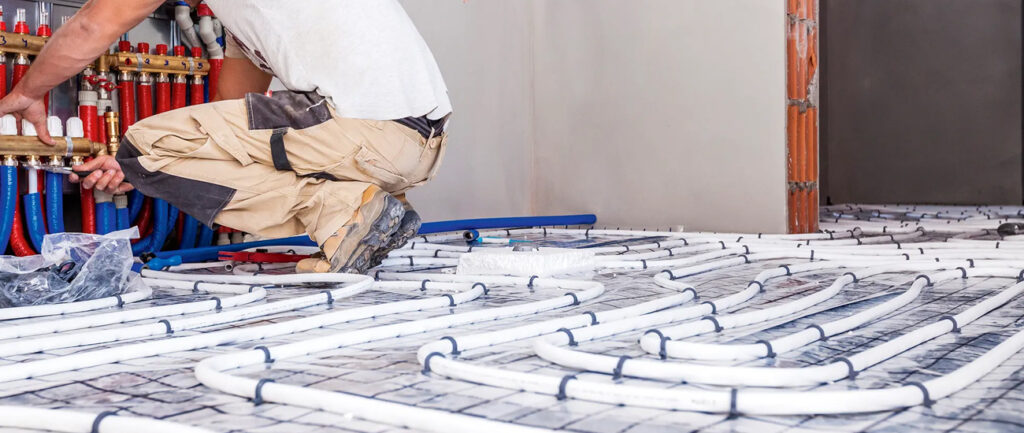
Space-efficient
You may never have realised how much space a radiator takes up in a room, or how much of a distracting eyesore it can be while trying to design your interior. Underfloor heating can remove the need for radiators, letting you use your space much more efficiently, and opening up a range of design options that wouldn’t be available with traditional heating in a room.
Comfort
A cold floor can feel uninviting and awkward to walk on, but heated flooring is inherently comfortable in comparison. If you want to be able to walk on your engineered wood floors, but with the comfort and warmth of a quality carpet, consider adding underfloor heating to your room.
Cleanliness & air quality
We often don’t think about all the dirt and dust that radiators can harbour, but without regular cleaning, they can affect the air quality of your home. Underfloor heating removes this issue by replacing those dust-attracting heaters with a more efficient option that’s easy to maintain.
Plus, since engineered wood floors are designed with interlocking planks to prevent any gaps, you can easily mop or vacuum your flooring without worrying about extra dust, moisture, and debris.
Potential issues with underfloor heating on wooden floors
When it comes to underfloor heated wooden floors, problems can occur if appropriate care isn’t taken when installing and maintaining your floors. Some of the most common issues facing engineered wood with underfloor heating are as follows:
- Warped planks
- Gaps appearing between planks
- Poor transfer of heat
- Top layer of wood coming loose
- Whole floor lifting (in serious instances)
These are often caused by changes in the environment of the room being heated. Major surface temperature changes, or uneven distribution of heat, can cause issues with your underfloor heating system. Humidity and moisture can also affect its quality, so be sure to use a small amount of water when cleaning your engineered wood flooring with underfloor heating problems. Additionally, avoid running your heating when the surface temperature is above 27 degrees Celsius.
How to prevent problems with underfloor heated wood flooring
There are a number of steps you can take to avoid common issues with your underfloor heating when using engineered wood floors. Here are some of the ways you can avoid future problems:
Keep your heating running for a regulated temperature
It’s not advised to completely switch off your underfloor heating for long periods, as a dramatic change in temperature can affect your flooring. If you need to change the temperature in your room, be sure to increase or decrease it in small amounts, gradually, over a period of a few days.
It can also be useful to have both underfloor heating and a traditional radiator installed in a room, letting you switch between both options, and allowing for a better balance of air temperature. Ask a professional about whether your room could benefit from extra heating methods.
Install your flooring and heating properly
As tempting as it may be to sort out your flooring and heating yourself, it’s worth letting a professional take the reins, as issues with installation can lead to much greater issues further down the line. Always make sure your heating is installed by a reliable contractor.
Choose a suitable adhesive
When gluing down your engineered wood flooring, it can be tempted to opt for a cheaper adhesive to save money. However, these more affordable options are often less high-quality than their alternatives, leading to issues with your flooring in future. Make sure you pick a strong, resistant adhesive to make your floors last as long as possible.
Use appropriate cleaning methods
If you’re cleaning your engineered wood floors, it’s crucial to avoid using too much water, as excess liquid can damage the bond between your boards. Also be sure to check that any cleaning products you use are compatible with wooden flooring, and follow the instructions included on the label.
Conclusion
If installed correctly, underfloor heating is a luxurious addition to any home, and can cost you less money in the long run than traditional choices for warming your home. Be sure to keep an eye out for any potential issues with your heating system, and address them immediately to prevent them worsening.
Looking to add engineered wood floors to your home? Whether you’re installing a classy herringbone wood floor, or more traditional engineered wood planks, Flooring King can help you choose the right fit for your room at a great price. Choose from our free samples to test before you buy, or contact our experts for advice on bringing your design dreams to life.

